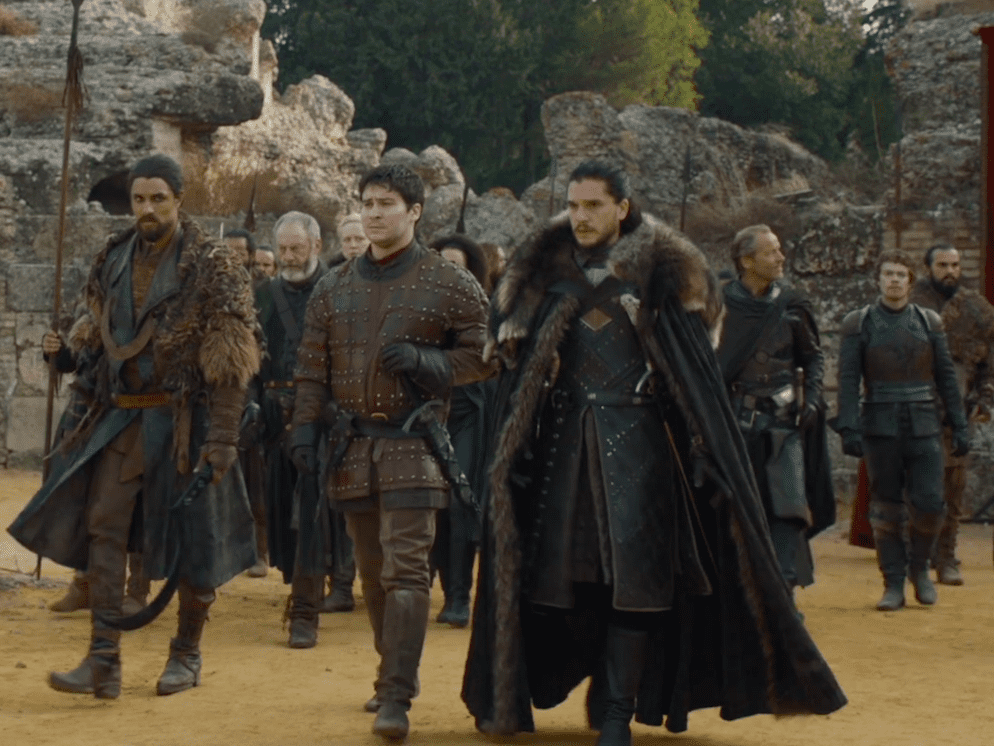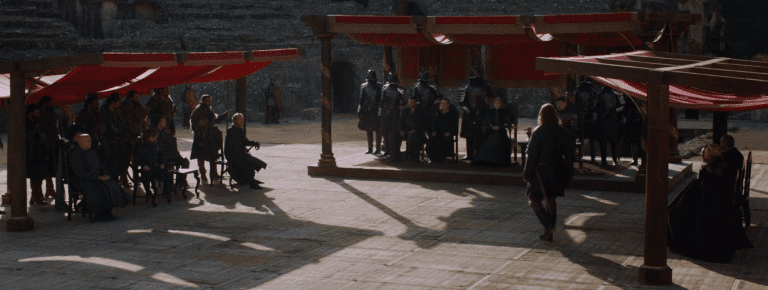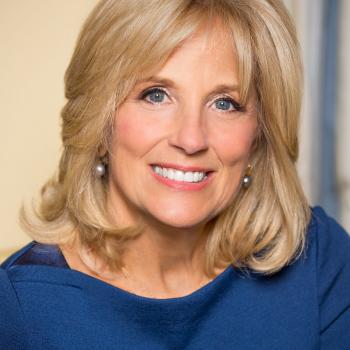I have been watching Game of Thrones since its first season aired in 2011. I’ve read some of the books too, and I know information from the books that fleshes out certain storylines or histories, but I’m primarily a follower of the show. There was a point when I almost threw in the towel, tired of watching the show torture its female characters, but the writers began to turn their treatment of women around in time to maintain my loyalty.
I awaited season 7 with anticipation.
Like many here, I watch this show not only as a huge fan of fantasy but also as a feminist. As such, I cheered when Daenerys Targaryen strategized with Yara Greyjoy, Olenna Tyrell, and the Ellaria Sand—having four powerful female leaders in one room felt like a gift after what the show’s female characters have suffered in previous seasons.
As fan Jess Hendel noted at Bustle at the end of season 6:
…almost all of the rulers in the show are now women. Aside from Jon Snow, it’s hard to even imagine a male ruler in the GoT universe anymore — or at least, one who doesn’t totally make a mess of his reign. Daenerys decisively quelled the Masters’ rebellion in Slaver’s Bay (now the Bay of Dragons), and is headed across the Narrow Sea to conquer Westeros. Yara Greyjoy sails out with her, aiming to capture the throne of the Iron Islands and reclaim their sovereignty. Ellaria and the Sand Snakes rule Dorne, conspiring with Olenna Tyrell, who is now the sole proprietor of her house.
And yet, after coming together at Dragonstone at the beginning of season 7, all of these female leaders except Daenerys were immediately eliminated. Olenna? Poisoned by Jaime. Ellaria? Imprisoned by Cercei, never to return. Yara? Captured by her brother and absent for the rest of the season. We’re back to one woman, Daenerys, and her male allies.
Now yes, we still have Sansa and Arya, but we spent most of the season worried that the two were about to turn on each other. This show can have powerful female leaders, I ranted to my husband, it just can’t keep them. Oh certainly, the show’s main human conflict is now between two queens, but who else is in the room when one or the other of these queens strategize? Men. Only men.
No really—think about it. Besides Cercei and Daenerys, we’re down to Sansa and Arya, and possibly Lady Mormont (though her role appears to be limited). If we include other characters we can add only Brienne (serving Sansa) and Missandei (serving Daenerys). Melisandre is still alive but seems to be out of the picture. Compare this to the huge swath of male characters we still have.

Headed to the finale episode’s ill-fated truce proceedings we see Sir Davos, Podrick, Jon Snow, Sir Jorah, and Theon Greyjoy, all significant characters with plenty of screentime. Slightly obstructed, we see Missandei and Brienne.
How many women were at the proceedings, and how many men?

Under the canopies were Cercei, Euron, Qyburn, and Jaime, and Daenerys, Varys, Sir Jorah, and Tyrian. In each case, a queen and her male allies and advisors. While Missandae and Brienne were present, so were Jon Snow, Bron, Podrick, Sir Davos, the Hound, and the Mountain.
As I watched Sansa and Arya, I worried that we were about to see two of our shrinking number of female characters turn on each other at the behest of the writers. Had the writers ever allowed two female peers on this show to be friends and trusted allies? I couldn’t think of any examples, and that worried me. Ultimately, as those who watched last night’s episode know, Sansa and Arya did not turn on each other. Instead, they worked together to eliminate Petyr Baelish, who had become one of the show’s most hated characters. It was the perfect comeuppance.
There’s more, too. While many have complained about how quickly characters have moved from place to place this season—the “shrinking” of Westeros and the sudden emergence of seemingly magical teleportation—the season has also lost its gratuitous female nudity (i.e. the naked prostitutes who seemed to follow in certain male characters’ wakes), and its gratuitous rape and sadism. When it’s put in that light, I’m not so concerned about cutting excess in the interest of developing characters and pushing forward plot. In fact, it seems a welcome move.
And finally, while Olenna and Ellaria are gone for good (and no one much liked Ellaria anyway), Yara is still alive and could make a comeback in season 8. We may see an expanded list of female leaders in season 8. Perhaps we’ll even see more Lady Mormont.
Still, the show did something else in season 7, something that should not be missed—it disinherited one of its most central female characters, one of its two warring queens, in favor of a man. If Jon Snow is the legitimate son of Rheagar Targaryen, and not a bastard, he, and not Daenerys, is the heir to the iron throne. How will this news affect Daenerys—and Jon? This revelation means that if Daenerys does become queen, it will only be through marriage, and not through her own right.
Will a conflict between two queens be ended when a man seizes the throne? Remember that Hendel wrote, at the end of season 6, that “almost all of the rulers in the show are now women” and “[a]side from Jon Snow, it’s hard to even imagine a male ruler in the GoT universe anymore.” Hendel wasn’t the only one saying this: The ‘Game Of Thrones’ Season 6 Finale Made It Nearly Impossible For A Man To Take The Iron Throne, And That’s Huge, declared one headline at the end of season 6. Well yes. That was true, for a very brief moment. Then that moment ended.
Imagine that—a show that presents a full set of female leaders and one male leader and then eliminates the women one by one, by death or capture or by disinheriting them, leaving the single male in the mix to rule the lot.
How very typical.











